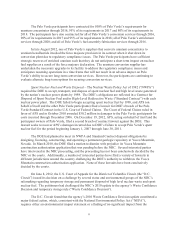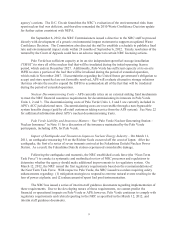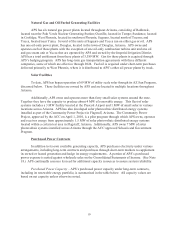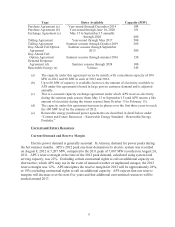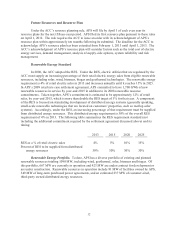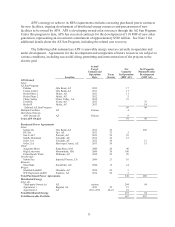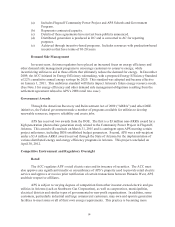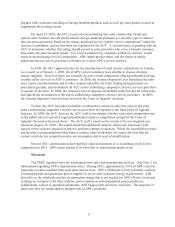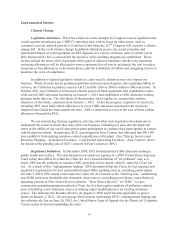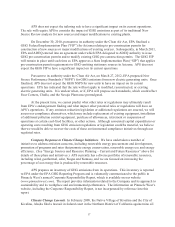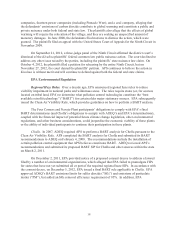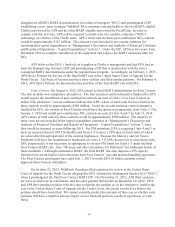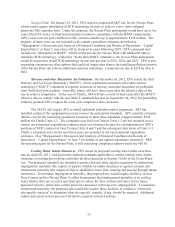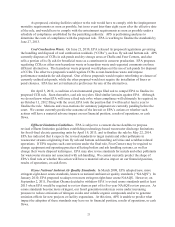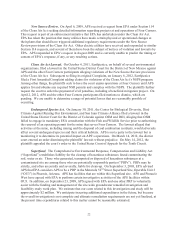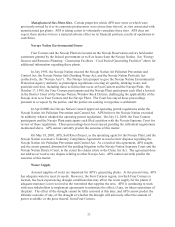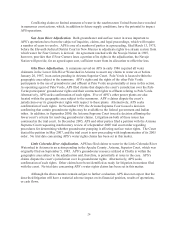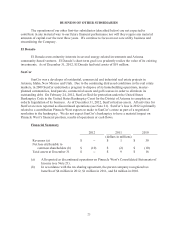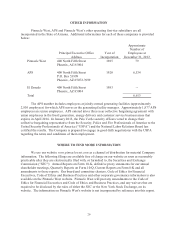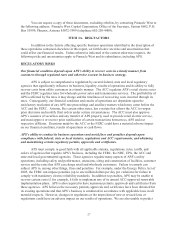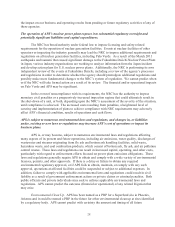APS 2012 Annual Report Download - page 42
Download and view the complete annual report
Please find page 42 of the 2012 APS annual report below. You can navigate through the pages in the report by either clicking on the pages listed below, or by using the keyword search tool below to find specific information within the annual report.18
companies, fourteen power companies (including Pinnacle West), and a coal company, alleging that
the defendants’ emissions of carbon dioxide contribute to global warming and constitute a public and
private nuisance under both federal and state law. The plaintiffs also allege that the effects of global
warming will require the relocation of the village, and they are seeking an unspecified amount of
monetary damages. In June 2008, the defendants filed motions to dismiss the action, which were
granted. The plaintiffs filed an appeal with the United States Court of Appeals for the Ninth Circuit in
November 2009.
On September 21, 2012, a three-judge panel of the Ninth Circuit affirmed the district court’s
dismissal of the Kivalina plaintiffs’ federal common law public nuisance action. The court declined to
address any other issue raised by the parties, including the plaintiffs’ state nuisance law claim. On
October 4, 2012, the plaintiffs filed a petition for rehearing by the entire Ninth Circuit, but on
November 27, 2012, the court denied the plaintiffs’ petition. APS continues to believe the action in
Kivalina is without merit and will continue to defend against both the federal and state claims.
EPA Environmental Regulation
Regional Haze Rules. Over a decade ago, EPA announced regional haze rules to reduce
visibility impairment in national parks and wilderness areas. The rules require states (or, for sources
located on tribal land, EPA) to determine what pollution control technologies constitute the “best
available retrofit technology” (“BART”) for certain older major stationary sources. EPA subsequently
issued the Clean Air Visibility Rule, which provides guidelines on how to perform a BART analysis.
The Four Corners and Navajo Plant participants’ obligations to comply with EPA’s final
BART determinations (and Cholla’s obligations to comply with ADEQ’s and EPA’s determinations),
coupled with the financial impact of potential future climate change legislation, other environmental
regulations, and other business considerations, could jeopardize the economic viability of these plants
or the ability of individual participants to continue their participation in these plants.
Cholla. In 2007, ADEQ required APS to perform a BART analysis for Cholla pursuant to the
Clean Air Visibility Rule. APS completed the BART analysis for Cholla and submitted its BART
recommendations to ADEQ on February 4, 2008. The recommendations include the installation of
certain pollution control equipment that APS believes constitutes BART. ADEQ reviewed APS’s
recommendations and submitted its proposed BART SIP for Cholla and other sources within the state
on March 2, 2011.
On December 2, 2011, EPA provided notice of a proposed consent decree to address a lawsuit
filed by a number of environmental organizations, which alleged that EPA failed to promulgate FIPs
for states that have not yet submitted all or part of the required regional haze SIPs. In accordance with
the consent decree, on December 5, 2012, EPA issued a final BART rule applicable to Cholla. EPA
approved ADEQ’s BART emissions limits for sulfur dioxide (“SO2”) and emissions of particulate
matter (“PM”), but added an SO2 removal efficiency requirement of 95%. In addition, EPA


